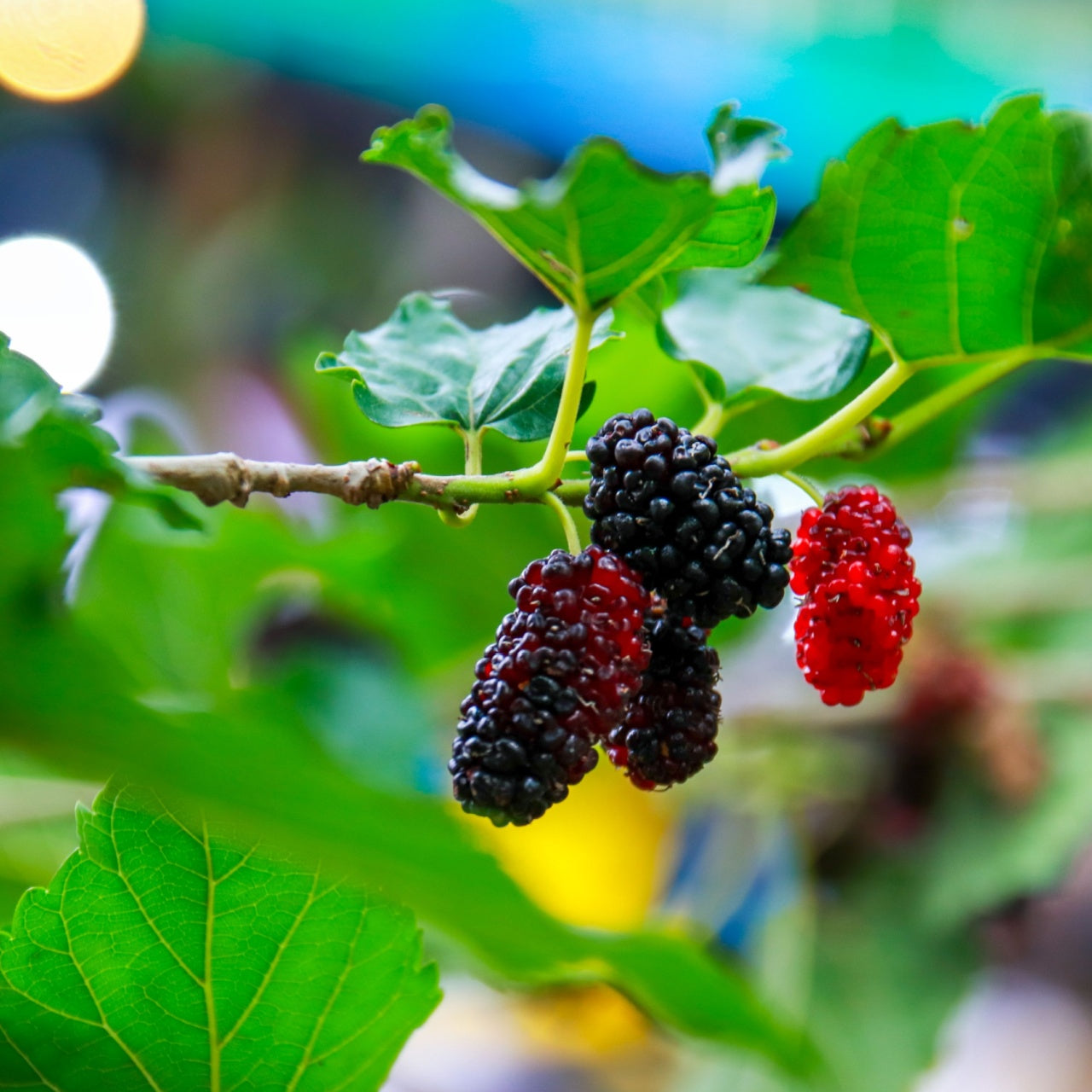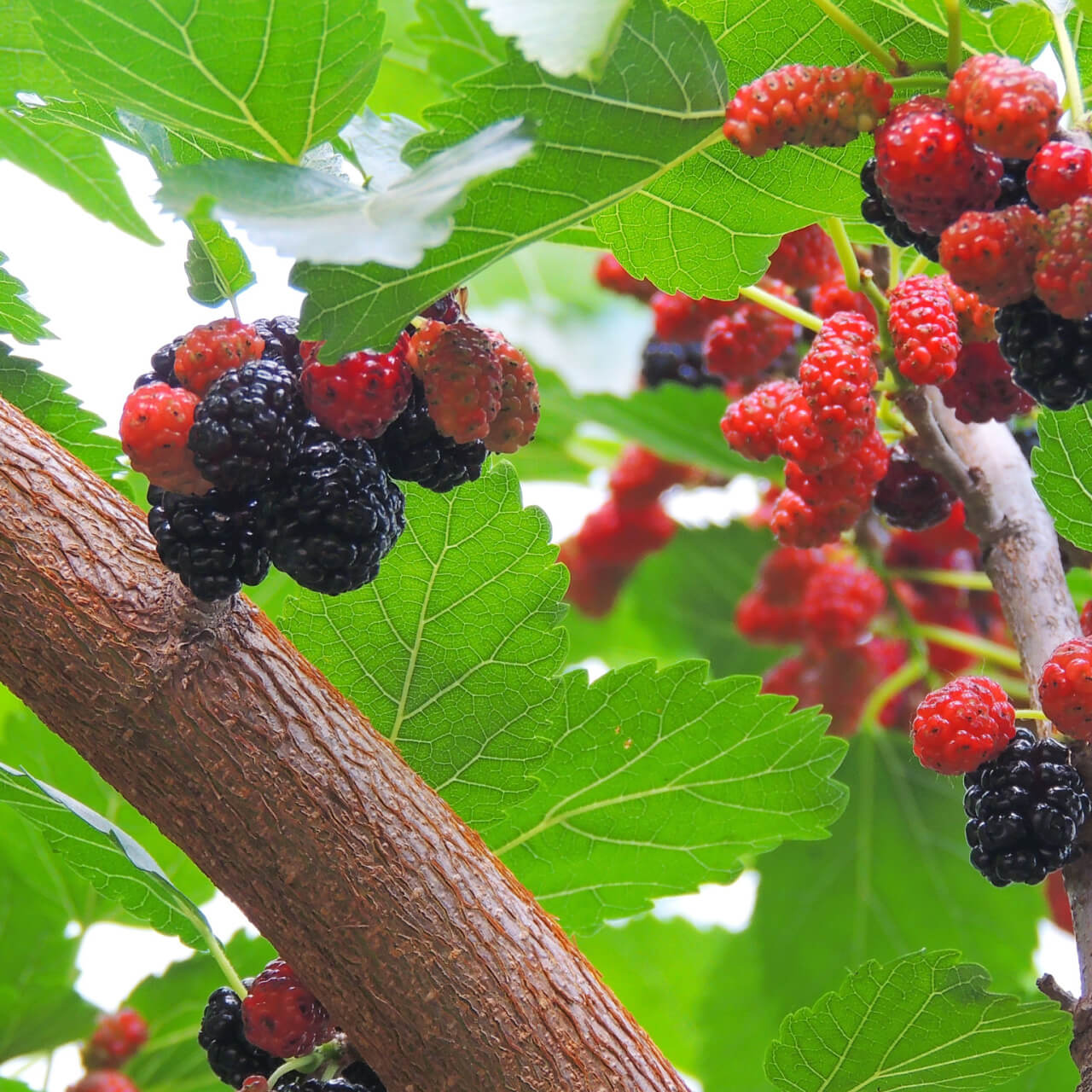Mulberry Trees For Sale
Mulberry trees are tall fruit trees that add great value to your yard or orchard. Enjoy their fruits in the summertime! If you love wildlife, such as birds and squirrels, this is a perfect native fruiting tree to plant, as it is disease-resistant, pest-resistant, low-maintenance, and easy to care for. Native plants typically require fewer fertilizers, herbicides, and insecticides. Under normal soil conditions, they thrive very well.
Flowers on this tree will bloom in the spring. They are small and green, not ornamental. However, the flowers and leaves have a subtle, spicy, earthy scent you will enjoy without ornamental flowers. This fruit tree requires at least moderate maintenance to thrive in your yard.
Plant Details | Mulberry Tree (Morus sp) Facts
Family: Moraceae
Light Requirement: Full Sun
Water Needs: Moist
Height: 30 – 45 ft.
Spread: 20 – 40 ft.
Growth Rate: Fast
Bloom Time: Spring
Flower Color: Green
Wildlife Value: Attracts bees, birds
TN Nursery Offers 2 Varieties of Native Mulberry Trees
White or red mulberry trees are offered at TN Nursery. Morus Nigra is a super popular fruiting tree native, and the mulberry fruits of the red are an all-time favorite. Home gardeners love these old-fashioned native trees because they produce small, highly tasty fruits. This native tree is native to North America. The tree grows fast and is easy to thrive in most soils and zones.
Growing and Maintaining Mulberry Trees in Your Landscape
The Mulberry Tree is a native deciduous tree that has leaves with serrated edges and fruits that range from dark red to white, depending on the variety. It's an easy native that grows and thrives almost anywhere you plant it. This tree is a magnet for the flowers, which attract bees.The fruits will attract plenty of wildlife to your garden, including birds, squirrels, and other mammals.
Features & Wildlife Benefits
The Mulberry Tree has edible fruits similar in shape to blackberries or raspberries but are not sold in stores due to poor shelf life. Quickly pick the fruits of your labor and eat them! You can eat them raw or cooked.
This is a tree that is self- and wind-pollinated in addition to attracting bees, so if your property has a low population of these insects, you will still be able to have fruits.
Exposure
Mulberry trees thrive in full sun, requiring at least 6-8 hours of direct sunlight daily. They can tolerate some partial shade, but total sun exposure is best for optimal fruit production and growth.
Height at Maturity
Over 25 Feet
Usage
Fruit
Shipped As
Bare-root
Ships
UPS
Planting Zones
4-8





